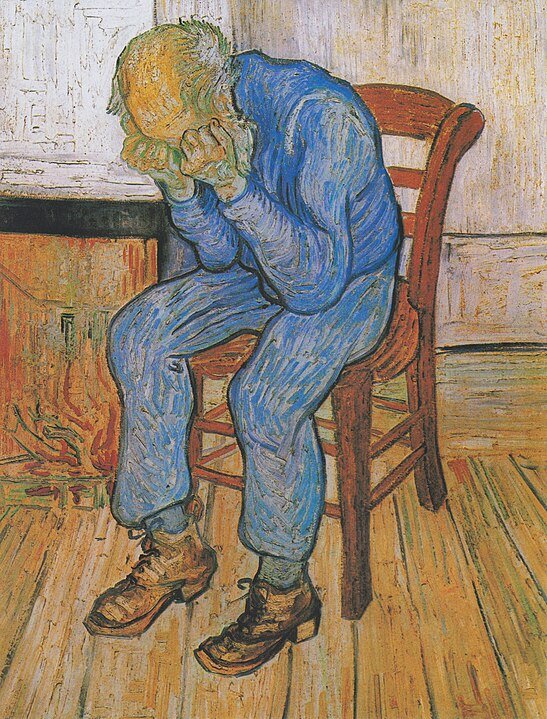Emotional Distress
I was a teenager once, so I am no stranger to emotional distress. But the term has a different significance in litigation. In addition to permitting plaintiffs to recover their out-of-pocket losses and lost earnings, courts often permit plaintiffs to collect cash from defendants to compensate them for the sadness, anxiety, and trauma they suffered because of the defendants’ bad acts. Not every claim qualifies for emotional distress damages, though, and not all distress is compensable.
Why should you read this post about emotional distress?
You did an internet search for emotional distress and decided to read the millionth thing that came up .
You got sued for breach of contract and it is driving you crazy.
You want a reason to ask your therapist for receipts for your co-pays.
Image credit: https://en.wikipedia.org/wiki/Psychological_pain#/media/File:Van_Gogh_-_Trauernder_alter_Mann.jpeg
What Claims Qualify
Some laws specifically permit plaintiffs to recover for their emotional distress. For example, statutes that prohibit discrimination permit successful plaintiffs to recover damages for their emotional distress.
Some claims only seek compensation for emotional distress. These claims include intentional infliction of emotional distress and negligent infliction of emotional distress. These claims are very difficult to win, though. It is not enough that the defendant did something that caused the plaintiff distress, but that the defendant did something incredibly egregious. Classic examples are exposing someone to a deadly virus and torture. Accordingly, mere financial disputes do not qualify as predicates for these claims.
Outside of those claims, emotional distress damages are not generally available. For example, the U.S. Supreme Court recently noted that it is well-settled that breach of contract claims do not entitle a plaintiff to emotional distress damages. And the general stress that comes from being involved in a lawsuit is generally not the kind of distress for which courts award compensation.
How Do Courts Put a Dollar Amount on Emotional Distress
One of the challenges in settlement negotiations is that there is no clear formula to assess what the cost of emotional distress is. Instead, a jury gets to decide that number. As a result, the amount may vary considerably. This makes it hard for parties before trial to agree on a settlement since, even if they could agree on the objective facts, they may not be able to agree on the plaintiff’s subjective experience or what random dollar amount a jury may assign to it.
Successful plaintiffs often present testimony and evidence about the distress they suffered. This may include evidence that the plaintiff sought professional help for the emotional distress or the testimony of witnesses who observed a demonstrable change in behavior. Some present expert witnesses that can describe the suffering that a plaintiff may feel in a specific situation.
If a jury provides a very high award, however, the defendant may ask the court to reduce it to make it more in line with the awards in similar cases.
The Strategic Use of Emotional Distress Evidence
In addition to increasing the potential damages a plaintiff can recover, the ability to recover for emotional distress permits the parties to seek and present evidence on the plaintiff’s emotional state. This provides an opportunity for the plaintiff to present evidence that may not be relevant to the question of whether the defendant engaged in misconduct, but that does provoke sympathy for the plaintiff and a feeling that someone should do something to help them. Some plaintiffs lawyers may use this to persuade a defendant or a jury to overlook shortcomings in the case to ultimately find for their client.
Conversely, some defendants may take advantage of the fact that the plaintiff’s emotional state is relevant to the case to seek and present evidence that is unflattering to the plaintiff. This may include the plaintiff’s pre-existing mental illness or other sensitive subjects. Some plaintiffs may prefer to settle a case rather than expose these subjects to public view.
